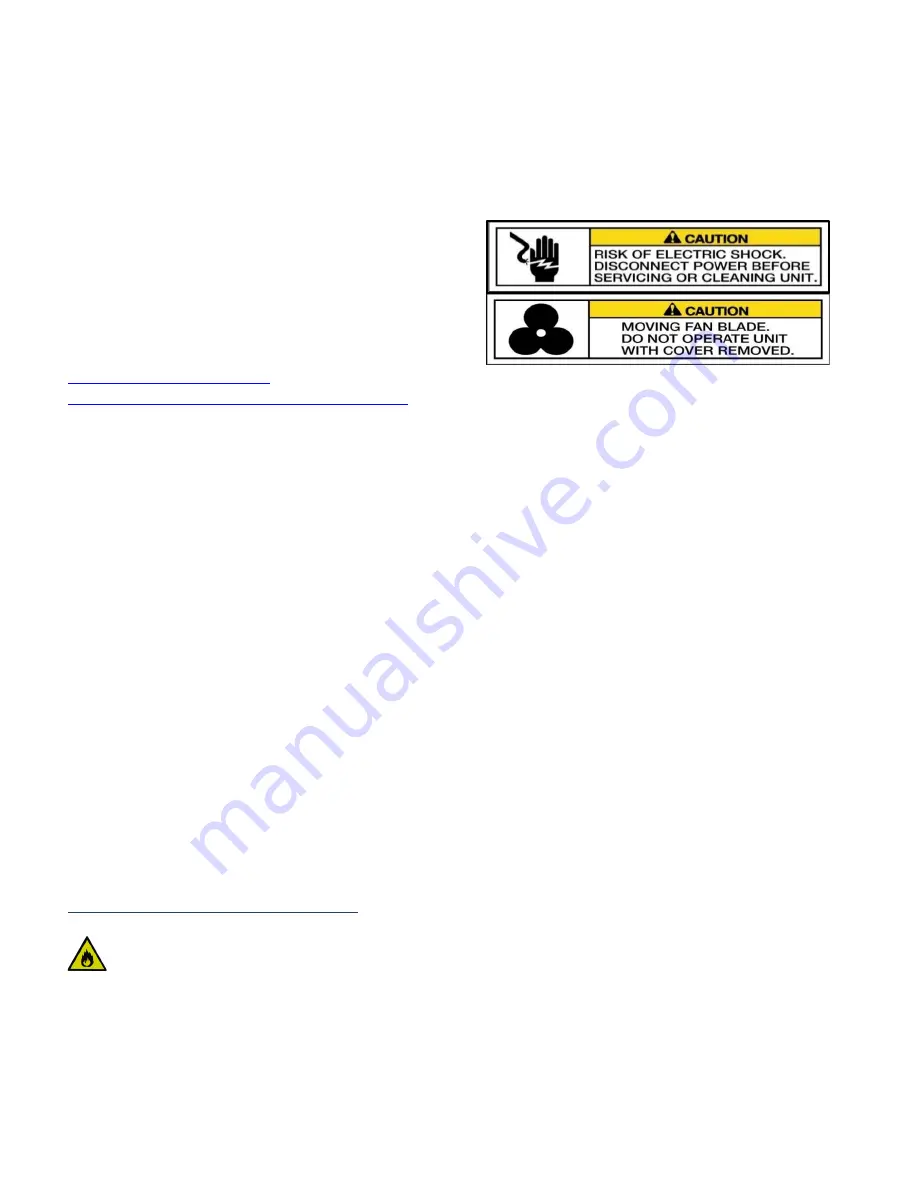
7
“LA” – Minimum Temperature Alarm: The
cabinet air temperature has dropped below the
programmed minimum. This alarm will continue
to display until the cabinet temperature rises
above the minimum level.
Note
: Should a “P1” or “P2” alarm occur, check
the probe wire connections to the control prior to
replacing the probe wire.
For more detailed information regarding the
Electronic Control programming and instructions,
please contact: Leer, Inc. Merchandiser Division
Customer Service. Phone: 800-766-5337. Contact
information is available on our web-site at
http://www.leerinc.com/ice-
merchandisers/merchandiser-sales-distributors/
Loading Ice:
The merchandiser should be pre-chilled prior to
loading with ice. Pre-chilling will aid the
merchandiser in reaching storage temperature at a
faster rate once loaded and reduce the risk of
melting product. Do not over fill the merchandiser
with ice!
Auto-Defrost: Avoid stacking ice above the top
edge of the air ducts that are installed on the walls
of the cabinet interior. Blocking off these air ducts
may restrict the even distribution of cold air
throughout the cabinet. This may result in warm
spots developing within the cabinet. Also, do not
stack ice high enough to block off the evaporator
fans in the unit cooler assembly. The evaporator
fans are intended to pull warm air entering the
cabinet into the unit cooler and then push that
warm air across the surface of the evaporator coil.
This process removes the heat prior to distributing
the air into the cabinet.
Maintenance and Service
Danger! This unit is charged with R290
(propane refrigerant). Propane is a flammable
and explosive gas. Component parts shall only
be replaced with like components.
Maintenance and repair of the electrical and
refrigeration systems should only be done by
licensed, trained and qualified personnel.
Disconnect power before performing service.
Certain models may contain multiple voltages.
Leer does not assume responsibility for any
damage to people or things deriving from
violation, improper use or in any case not in
compliance with Leer’s instructions.
Cleaning the Merchandiser:
The merchandiser should be cleaned annually. In
corrosive environments such as coastal regions
and areas where deicing chemicals and road salts
are used, more frequent cleaning is recommended.
The exterior of the merchandiser can typically be
cleaned with the use of detergents dilluted in
warm water followed with a tap water rinse. The
exterior paint is capable of withstanding the use of
polishing compounds and most solvents. If using
stronger cleaning agents, they should be tested on
a small, inconspicuous areas prior to application
onto visible surfaces of the merchandiser. If
cleaning the interior of the merchandiser, the use
of detergents with strong odors (i.e. citrus based
cleaners), abrasive cleaners containing chlorine
bleach, and any form of solvent based cleaners are
not reccommended. They may leave objectionable
odors inside the cabinet which may be absorbed
by the ice being stored in the merchandiser.
Cleaning Door Gaskets:
Door gaskets may mildew and stiffen over time.
The gasket is made of a soft, flexible rubber-like
material that can be cleaned using most kitchen
and bath cleaners designed for mildew removal.
Review manufacturer information and instructions
on any cleaning agent prior to use to determine
the cleaner’s compatability with the surface being
cleaned.

























